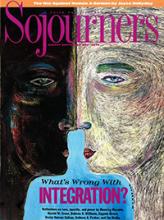ON JUNE 23, 1953, it was reported in The New York Times that the NAACP had officially established integration as the association's programmatic policy of pursuing civil rights within the legal framework of the "separate but equal" doctrine growing out of the Supreme Court decision in the Plessy v. Ferguson case of 1896.
This change in policy occurred during the last months of the Truman administration. Eisenhower Republicans won the election in November 1952. Two years later came the Brown decision of 1954, and, in retrospect, it might appear from the civil rights record that the NAACP—as early as 1952—was changing its declared policies in prescient anticipation of the Supreme Court's coming change of heart toward overturning the Plessy doctrine.
Following the Brown decision came the upsurge of civil rights protest activities of the 1960s, but it remained a question as to how many of the new black activists actually understood the legal and constitutional ramifications behind the Supreme Court's overturning of Plessy v. Ferguson's separate but equal doctrine by way of the Brown decision, which made the integration of public school systems the "law of the land. "
The Plessy v. Ferguson separate but equal doctrine was handed down by the Supreme Court in 1896. The decision was the result of a suit brought against the state of Louisiana by Homer Adolph Plessy, a New Orleans black of mixed French and African-American heritage. The presiding judge of the Louisiana Court prior to the Supreme Court's decision was John H. Ferguson. Plessy's legal suit opposed a New Orleans ordinance that would legalize a railroad company's right to impose racially separate railroad-car facilities for blacks and whites in state and interstate travel.
Read the Full Article
